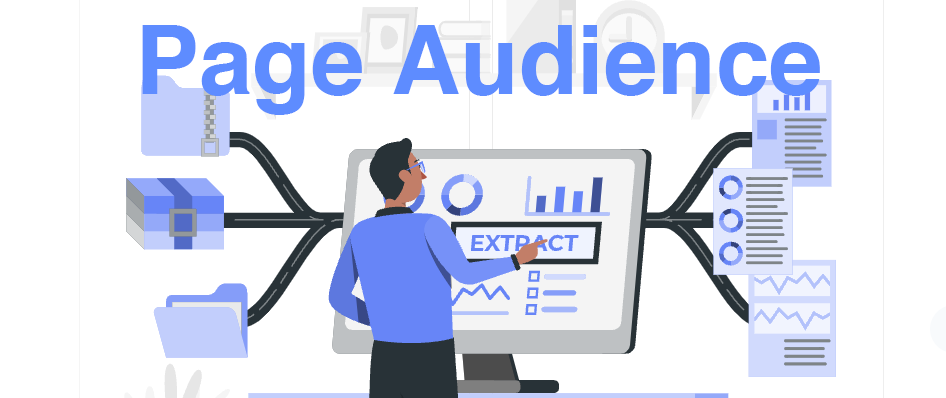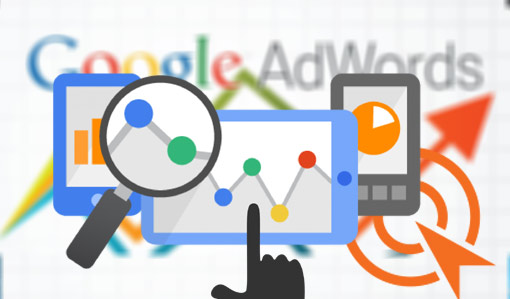The Art of Audience Targeting: A Comprehensive Guide
Introduction:
In today's dynamic marketing landscape, navigating the intricate maze of consumer preferences and behaviors is crucial for success. Understanding your target audience is the cornerstone of crafting effective marketing campaigns that resonate, engage, and ultimately convert. This comprehensive guide delves into the concept of audience targeting, exploring its benefits, strategies, best practices, and real-world examples to empower you to reach the right people at the right moment.
The Everlasting Power of Audience Targeting
Audience targeting, the process of using data to identify and reach specific customer segments, is not a groundbreaking innovation. However, its effectiveness in reducing ad spend waste is undeniable. A staggering $5.6 billion of digital ad spend was wasted in 2022 alone. Industry reports highlight that a significant portion of ad spend is misdirected due to poor targeting. The solution? Audience targeting and segmentation.
Demystifying Audience Targeting: Reaching the Right Audience
Audience targeting, also known as crowd targeting, involves segmenting customers based on demographics (age, gender, location), interests, behaviors, and a multitude of other factors. This allows marketers to craft campaigns that resonate with specific consumer needs, preferences, and lifestyles. As a result, ads are displayed to those most likely to take action, leading to:
- Reduced Ad Spend Waste: Targeting eliminates wasted impressions on irrelevant audiences.
- Improved Conversion Rates: Relevant messages resonate with intended viewers, leading to higher conversion rates.
- Stronger Brand Relationships: Tailored communication fosters deeper connections with potential customers.
Decoding the Nuances of Audience Targeting Strategies
There are three main types of audience targeting strategies, each offering distinct advantages:
- Demographic Targeting: This strategy leverages demographic data like age, gender, income, and location to reach specific customer segments. Imagine promoting luxury watches; targeting individuals with a higher income bracket increases the chances of reaching potential buyers.
- Psychographic Targeting: This strategy dives deeper, focusing on values, interests, activities, and lifestyle choices. Targeting fitness enthusiasts with ads for athletic wear is a prime example of psychographic targeting.
- Behavioral Targeting: This powerful strategy utilizes data on past behaviors and activities. Retargeting website visitors with ads for products they viewed is a prevalent example of behavioral targeting.
Fueling Your Targeting Efforts: Data Sources
Effective audience targeting hinges on a solid foundation of data. Here are the two primary sources:
- First-Party Data: This invaluable data treasure trove is collected directly from your customers through past purchases, website interactions, and surveys. It offers insights into specific customer segments, preferences, online behavior, and more. Use this data to personalize messages, understand customer trends, and predict future interests.
- Third-Party Data: This data, compiled and sold by data providers, allows you to rapidly expand your campaign reach beyond your own customer base. While less targeted than first-party data, it's ideal for large corporations looking to quickly scale campaigns. As regulations regarding third-party data collection evolve, cookieless marketing strategies are gaining traction.
The Importance of Knowing Your Target Audience
A successful marketing plan hinges on understanding your target audience. This knowledge empowers you to:
- Make Smarter Budget Decisions: Allocate resources efficiently by targeting the right audience.
- Develop Effective Personas: Create detailed profiles of your ideal customers for better campaign design.
- Build Stronger Brand Engagement: Craft messaging that resonates with your target audience's needs and values.
Expert Strategies for Audience Targeting Success
Go beyond basic targeting tactics by implementing these expert strategies:
- Engage Your Audience: Encourage direct feedback from your target audience. This feedback can be invaluable in shaping your marketing approach and identifying areas for improvement.
- Craft Compelling Content: Tailor your social media content to resonate with your target audience's interests. Conduct research to understand what content performs best within your industry and platform.
- Remarket with Precision: Leverage platforms like Google Ads to personalize ads based on past user behavior and browsing history. This enhances the effectiveness of your remarketing campaigns.
- A/B Test for Impact: Utilize A/B testing to compare different versions of your content or advertisements. This helps you determine which variations resonate best with your target audience, optimizing your campaigns for maximum impact.
- Prioritize SEO: Optimize your website for relevant keywords to appear in search results when consumers actively look for solutions related to your offerings.
The Power of the Buyer's Journey: Understanding Your Audience's Needs
The buying process is now firmly in the hands of the consumer. Marketers must create targeted, personalized experiences to capture their attention amidst a sea of brands and advertisers. Understanding your ideal buyer allows for informed decisions about media, messaging, and timing.
Defining Your Target Audience: Who Are You Talking To?
Your target audience refers to the specific group of consumers most likely to want your product or service. They are the individuals you want to reach with your marketing messages and campaigns. Understanding your target audience is essential for creating effective marketing strategies that resonate with the right people and drive results.
Steps to Identify Your Target Audience
- Analyze Your Existing Customer Base: Start by examining your current customer data to gain insights into their demographics, interests, and behaviors. This can be done by analyzing website traffic, sales data, and customer surveys.
- Conduct Market Research: Explore industry trends, competitor analysis, and market research reports to understand the broader landscape and identify potential customer segments.
- Create Buyer Personas: Develop detailed profiles of your ideal customers, including their demographics, psychographics, and behavioral characteristics. These personas will guide your marketing decisions and messaging.
- Define Your Target Market: Identify the broader group of consumers within which your target audience falls. This will help you understand the overall market size and potential opportunities.
Understanding Your Target Audience's Needs and Pain Points
Delve deeper into your target audience's motivations, challenges, and needs. What are their goals, aspirations, and pain points? What drives their purchasing decisions? By understanding these factors, you can tailor your marketing messages to address their specific needs and resonate with them on an emotional level.
Leveraging Customer Data to Enhance Targeting
Customer data is a goldmine of insights for audience targeting. Utilize data analytics tools to extract valuable information from your customer data, such as:
- Purchase History: Understand which products or services your customers have purchased in the past to identify patterns and preferences.
- Website Behavior: Analyze website traffic data to see which pages your customers visit, how long they engage, and what actions they take.
- Social Media Engagement: Track social media interactions to understand your customers' interests, preferences, and online behavior.
- Email Marketing Data: Analyze email open rates, click-through rates, and conversion rates to identify which content resonates with your audience.
Using Audience Targeting Tools and Platforms
Numerous tools and platforms can help you refine your audience targeting efforts:
- Social Media Advertising Platforms: Leverage platforms like Facebook Ads, Instagram Ads, and LinkedIn Ads to target specific audience segments based on demographics, interests, and behaviors.
- Google Ads: Utilize Google Ads to target users based on their search queries, browsing history, and online behavior.
- Marketing Automation Platforms: Employ marketing automation platforms to segment your audience based on various criteria and deliver personalized messages.
- Data Management Platforms (DMPs): Utilize DMPs to consolidate and manage customer data from various sources for more comprehensive audience targeting.
Real-World Examples of Effective Audience Targeting
- Nike: Nike successfully targets runners by creating personalized ads based on their running habits, goals, and locations.
- Spotify: Spotify utilizes customer data to curate personalized playlists and recommend new music based on listening preferences.
- Amazon: Amazon's product recommendations are based on a complex algorithm that analyzes customer purchase history, browsing behavior, and other factors.
Conclusion
Audience targeting is an essential component of any successful marketing strategy. By understanding your target audience, you can craft targeted messages, campaigns, and experiences that resonate with the right people, leading to increased engagement, conversions, and brand loyalty. Continuously refine your targeting strategies based on data and insights to maximize the effectiveness of your marketing efforts.
Additional Tips for Effective Audience Targeting:
- Stay up-to-date with industry trends and consumer behavior: The marketing landscape is constantly evolving, so it's crucial to stay informed about new trends and consumer preferences.
- Regularly review and refine your target audience: As your business grows and your product or service offerings evolve, your target audience may also change. Regularly review your target audience profiles to ensure they remain accurate and relevant.
- Test and optimize your targeting strategies: Don't be afraid to experiment with different targeting approaches and measure the results. A/B testing can help you determine which strategies are most effective for reaching your target audience.
By following these strategies and utilizing the tools and resources available, you can effectively target your marketing efforts and reach the right customers, driving business growth and achieving your marketing goals.





